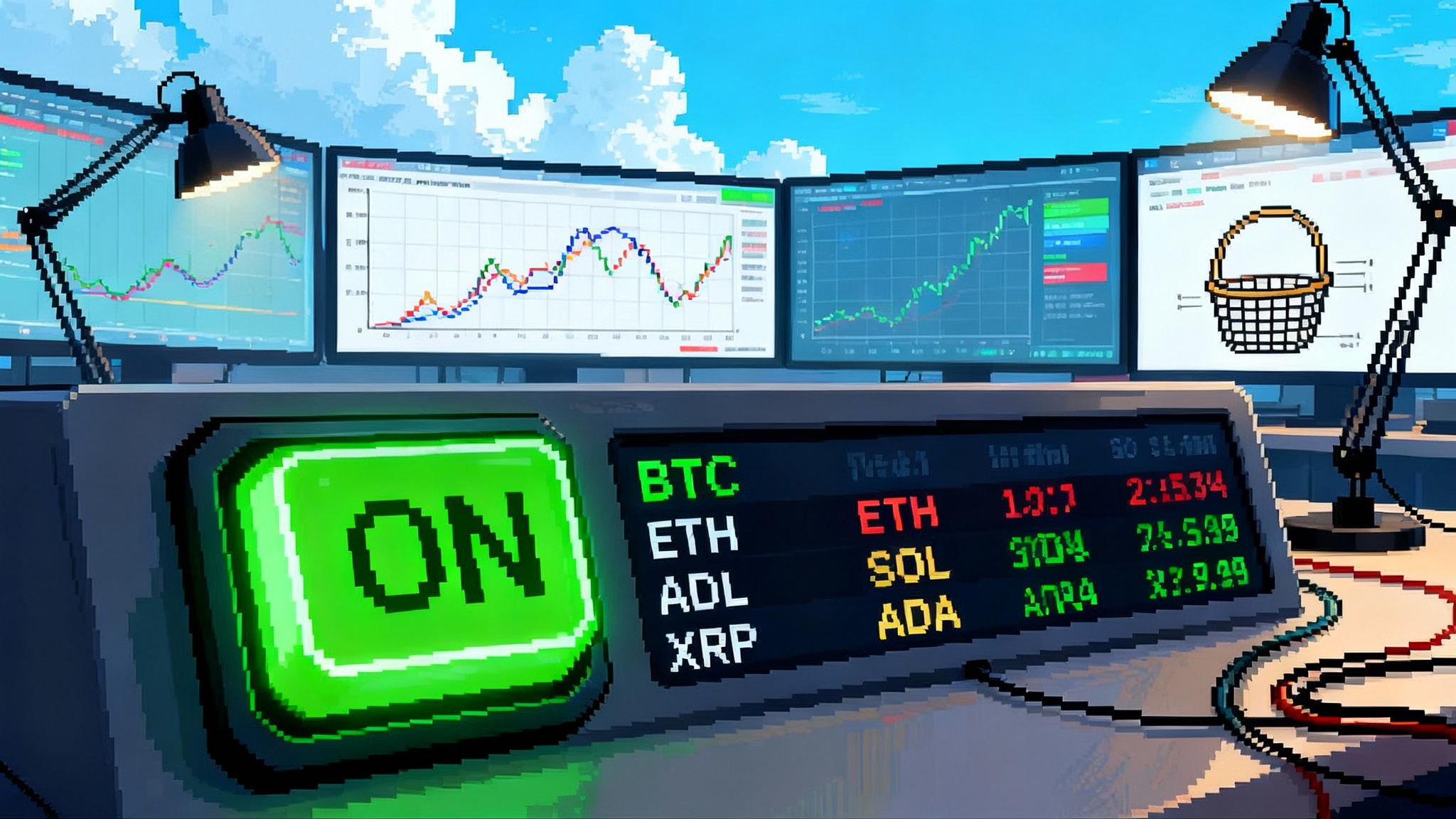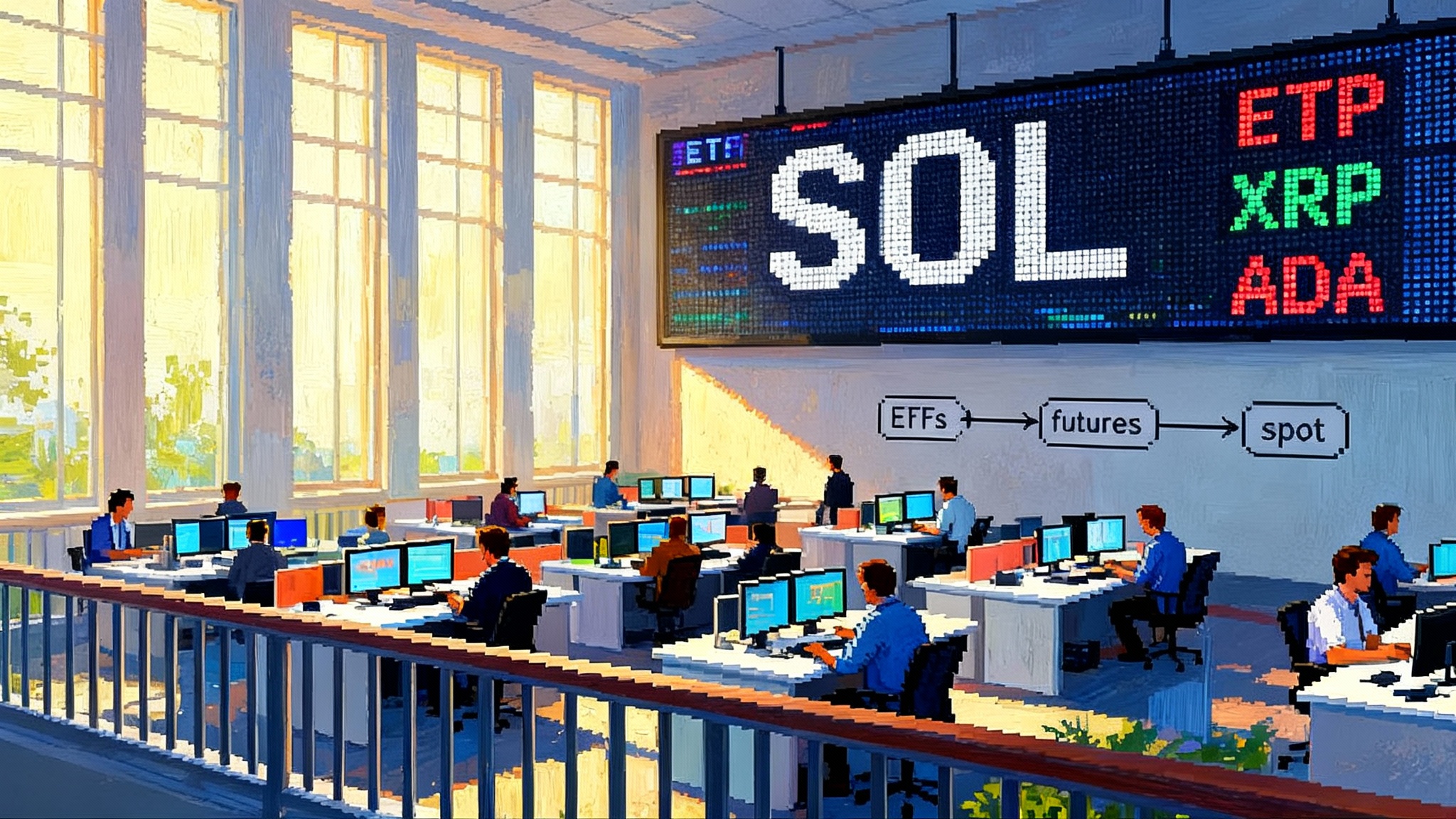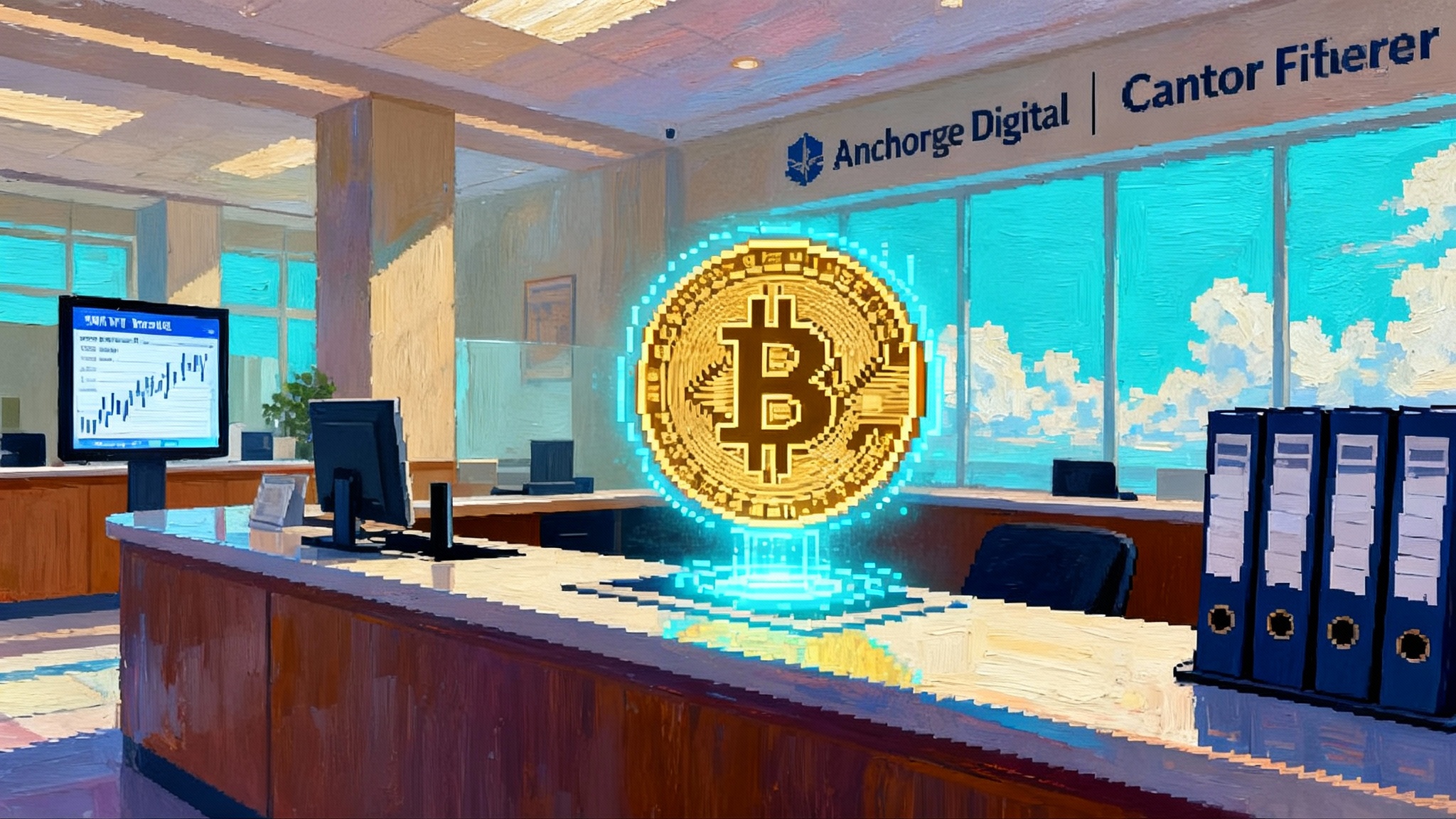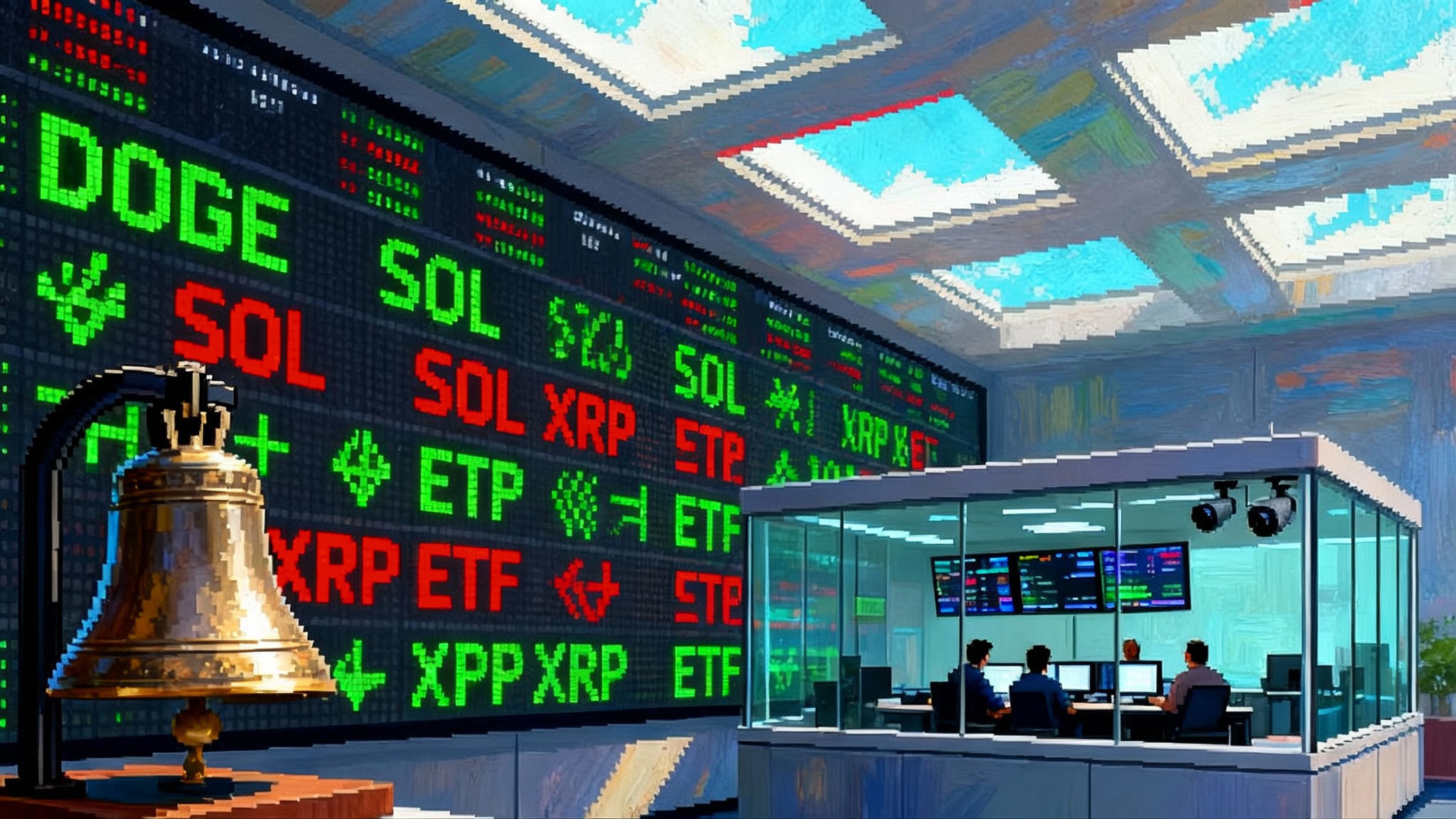SEC generic listing rules unlock a wave of altcoin ETFs
The SEC’s September 17, 2025 decision to adopt generic listing standards lets major exchanges list spot crypto ETPs without case-by-case approvals. Here is what changed, why the first multi-asset fund matters, which tokens are next, and what to watch as October listings approach.

The September pivot that changed everything
On September 17, 2025, the U.S. Securities and Exchange Commission approved exchange rule changes that allow NYSE Arca, Nasdaq, and Cboe to list spot commodity-based ETPs, including crypto, under generic listing standards rather than one-off 240-day rule filings. In plain English: if a product meets the checklist the SEC just blessed, exchanges can list it without waiting for a bespoke Commission order. That single decision moves the crypto ETP market from bespoke to programmatic, cutting months from launch timelines. The SEC framed the move as streamlining access while preserving investor protections, and it approved a flagship large-cap crypto basket the same day to underscore intent. For the official details, see the SEC approval of generic listing standards. For a deeper primer, see our explainer on how generic listing rules reshape crypto ETFs.
What the old world looked like
Until now, spot crypto ETPs relied on case-by-case approvals under Exchange Act Section 19(b). Each product demanded months of comment periods, surveillance-sharing analysis, and Commission review. That is how spot bitcoin and ether ETFs were approved, but it left most other assets waiting in line while futures-based exposures proliferated on designated contract markets.
What the new world enables
Generic listing standards give exchanges a clear, pre-approved rubric. If an ETP’s design, disclosures, surveillance, and eligibility boxes are all checked, the exchange can list it and post the required product information within five business days of trading commencing. This effectively flips the default from no to yes for qualifying products and shifts the Commission’s focus from relitigating the same issues to ensuring exchanges apply the framework consistently.
The first big signal: a multi-crypto large-cap goes live
The same meeting that approved the generic standards also cleared the first U.S.-listed multi-crypto large-cap product. That matters for three reasons:
-
Index-like exposure goes mainstream. Investors already had single-asset spot ETPs for bitcoin and ether. A listed basket offers a simple, regulated way to hold diversified large-cap crypto through a broker account. See how this ties to multi-asset crypto ETFs and in-kind flows.
-
Operational precedent. A multi-asset product forces clarity on pricing sources, custody segregation by asset, creation and redemption mechanics across multiple chains, and real-time disclosure of portfolio weights. Once one issuer standardizes this, the rest of the market can follow faster.
-
A practical roadmap for constituents. Even if an individual asset is weeks from meeting the futures-based eligibility test, its inclusion in a basket signals where market structure is headed and what operational hurdles issuers and exchanges have already solved.
The new eligibility tests, explained simply
What qualifies a given token for a spot ETP under the generic standard There are three independent paths for each crypto asset in a trust. For each asset, at least one of the following must be true:
- ISG coverage: The asset trades on a market that is a member of the Intermarket Surveillance Group, and the listing exchange can obtain trading data from that ISG member.
- Futures track record: There is a futures contract on the asset listed on a CFTC-regulated designated contract market for at least six months, and the listing exchange has a comprehensive surveillance-sharing agreement with that DCM, directly or via ISG membership.
- 40 percent ETF test at initial listing: At the initial listing only, there is an exchange-traded fund on a national securities exchange that provides at least 40 percent of its NAV as economic exposure to that same asset.
If you want the exact rule language, see Nasdaq’s Exhibit 5 eligibility criteria.
Two additional design constraints matter:
- No leverage or inverse. The generic standard is for unleveraged, long-only commodity-based trust shares.
- Liquidity and disclosure are mandatory. Daily NAV, intraday indicative values, historical premiums and discounts, median spreads, constituent weights, and formal liquidity risk policies must be published and updated.
So which tokens qualify next
With bitcoin and ether established, the near-term pipeline is about who clears the six-month DCM futures bar and where ISG coverage and surveillance sharing are practical.
- Solana (SOL): CME listed SOL futures in March 2025. Six months on the clock puts SOL in the first wave. Expect SOL ETPs to target October 2025 once final S-1s are effective. For market structure scenarios, see our take on the Solana ETF verdict in October.
- Cardano (ADA): Coinbase Derivatives listed ADA futures in late March 2025. The six-month mark falls in late September 2025, making ADA a near-term candidate for October 2025 listings, subject to registration effectiveness and exchange readiness.
- XRP: U.S. DCM listings for XRP futures began in spring 2025. XRP likely clears the six-month test in late October or November 2025, depending on which DCM an exchange relies on for surveillance sharing. That points to a second-wave product in Q4 2025.
- Dogecoin (DOGE), Litecoin (LTC), Bitcoin Cash (BCH): Some of these already meet the six-month test. Issuers that have kept S-1s current and can finalize AP agreements quickly may push for listings before year-end 2025.
- AVAX, DOT, XLM, SHIB and other July launches: Several assets went live on Coinbase Derivatives in mid July 2025. Add six months and you get mid January 2026. Those are realistic early 2026 candidates under the generic standard, assuming continued DCM liquidity and robust price references.
A note on the 40 percent basket test: it can help seed initial listings where a single asset dominates an ETF, but it is not a shortcut for adding smaller constituents to multi-asset baskets. Each constituent still has to pass one of the three tests individually.
Expected rollout timeline
Generic listing removes one bottleneck, but two others remain: effective registration and operational readiness. Here is the realistic cadence from mid September 2025 forward:
- Next 2 to 4 weeks: Exchanges post implementation bulletins and product pages describing generic-standard disclosures. Issuers update risk, liquidity, and creation basket language to match the new checklist. Authorized participants finalize agreements and collateral mechanics with custodians.
- October 2025: First wave of single-asset altcoin ETPs whose DCM futures already clear six months begin trading, led by SOL and ADA. The already-approved large-cap basket becomes a price-discovery anchor for multi-asset flows.
- Late October to November 2025: XRP likely clears the six-month DCM threshold, opening its window. Expect a cluster of XRP listings and baskets that planned to include it.
- December 2025 to January 2026: Second wave tied to assets that launched DCM futures in mid July 2025 hit their six-month date. If market conditions stay supportive, 2026 opens with a broader menu of large-cap and thematic baskets.
Keep in mind that the Commission still reviews registration statements for disclosure quality. Generic listing does not let issuers skip Securities Act obligations. It simply means the exchange does not need a bespoke 19(b) approval to list the shares.
Market structure impacts to plan for
The change is not just more tickers. It is how liquidity, hedging, and risk transfer evolve across cash, futures, and options.
- Primary market liquidity. Creations and redemptions will be handled by institutional authorized participants coordinating across multiple qualified custodians. For single-asset trusts, that means deepening borrow and settlement rails for each token. For baskets, it means standing up reliable cross-asset creation baskets and intraday cash substitutions to handle on-chain settlement lags.
- Secondary market spreads. Expect tight quoting from a mix of HFT equities firms and crypto-native market makers that arbitrage across the ETP, DCM futures, and large spot venues. Spreads should compress fastest in assets with the deepest DCM order books and the most consistent oracle pricing.
- Hedging toolchain. As options listed on indices tied to crypto ETFs expand, market makers will delta-hedge with a blend of futures and spot. The September approvals also included crypto index options, which should help align equity options risk transfer with crypto’s 24/7 underlyings during U.S. hours.
- Custody concentration. Coinbase Custody, Gemini, Fidelity Digital Assets, and a handful of bank-aligned providers will see heavier onboarding. Operational throughput, cold storage change windows, and staking policies will become competitive differentiators.
- Staking and yield. The generic standards call for liquidity risk policies when protocol-staked assets are involved. Some issuers may stake a portion of assets where chains allow it, but redemptions must not be gated by unbonding schedules. Expect conservative adoption and heavy disclosure before staking becomes common in listed products.
- Data and pricing. Exchanges will lean on IOSCO-aligned index providers with robust constituent exchanges and manipulation controls. Intraday indicative values will need resilient failover sources to prevent stale prints during venue outages.
- DeFi knock-ons. Spot inflows into listed ETPs move coins from open exchanges into qualified custody, marginally reducing on-chain float for lending and AMMs. In bull phases, that can tighten borrow and nudge staking yields. In risk-off phases, authorized participant redemptions can reintroduce supply quickly. Watch borrow rates and LST or LRT markets for spillovers.
Key risks that did not disappear
- Surveillance dependencies. The six-month DCM test is objective, but the exchange must have a comprehensive surveillance-sharing agreement with that DCM. Without that link, eligibility is theoretical.
- Liquidity cliffs. Some tokens have decent futures liquidity but spot market depth that waxes and wanes. APs will demand wider bands or cash substitutions if they cannot source coins predictably at scale.
- Legal classification drift. The approvals rely on a commodity-based trust structure, not the Investment Company Act. If future enforcement or court decisions put a large asset at risk of being treated as a security, exchanges could suspend trading to protect investors.
- Operational errors. Multi-asset creations, on-chain transfers, and cross-custodian reconciliations create new failure modes. Daily transparency helps, but a single custody mishap can widen discounts and force temporary halts.
- Index construction risk. For baskets, methodology changes and constituent rebalances can create mechanical flows that amplify volatility. Expect issuers to publish rebalance calendars and limit one-off discretionary changes.
What to watch now
- Exchange product bulletins. NYSE Arca, Nasdaq, and Cboe each publish daily notices of new listings and technical details on indicative values and disclosure pages. Those are early warnings for launch dates.
- S-1 amendment cadence. When issuers start filing pre-effective amendments every few days, a launch is imminent.
- DCM futures open interest and ADV. The six-month clock is necessary, but liquidity is the tell for how tight spreads will be. SOL, ADA, and XRP open interest trends are the first to watch.
- Authorized participant rosters. Expect the same APs active in bitcoin and ether ETFs to extend to leading alts. The more APs, the healthier the primary market.
- Custodian announcements. New SOC 2 reports, insurance disclosures, staking policies, and chain support updates signal readiness for additional assets.
- Options listings on crypto ETF indices. Options provide another risk transfer path and attract incremental flow that tightens spreads for the underlying ETPs.
The bottom line
By approving generic listing standards for commodity-based trust shares that hold spot digital assets, the SEC replaced one-off ETP approvals with a rules-based conveyor belt. That does not mean anything goes. It means that if a token has a real DCM futures market, robust surveillance links, reliable pricing, and proper disclosures, an exchange can list it without waiting a year.
First up are the assets with maturing U.S. futures markets and active surveillance pathways: SOL and ADA in October 2025 if registration statements are effective on time, XRP soon after, and then a series of single-asset and basket products built on that core. The result should be a broader, more liquid, regulated market for crypto exposure inside brokerage accounts, with tighter spreads, more hedging instruments, and clearer transparency. For traders, issuers, and market makers, the playbook is now published. The rest is execution.








